Today there are just two, which take place in the early summer and autumn as part of Royal Jersey Agricultural and Horticultural Society shows at the Royal Jersey Showground.
Since those bucolic days before Jersey lost its innocence, working lives and agricultural practices have changed and the dairy industry is time-consuming, but farmers are just as passionate about the Jersey as their forebears were.
Our dairy farmers don’t just produce milk; they, and their families, are guardians of the reputation of the Jersey cow, which is as famous worldwide as John Nettles’ Bergerac.
• Depth and capacity of body – important to maximise feed intake and aid milk production.
• Eyes must be bright and alert, ears carried forward, and the head should be held high.
• Mobility and gait are also important, as dairy cows walk long distances to graze.
• Considerable emphasis is placed on the udder, which should hang well up between the legs, with four well-spaced teats of equal length.
• The pelvis is an extremely important area, so there should be good proportional length between hip and pin.
Where the two ambassadors differ is the fact that Jersey has been coveted by cattle breeders for almost 150 years, and still is, whereas Mr Nettles has long retired from solving TV crimes.
The Island’s 22 dairy farmers and breeders are proud of that lineage, and not just because it makes a cow more valuable, as with the animal that was named Grand Champion at the RJAHS show last Saturday – Natalies Action Queen, owned by the Natalie syndicate of John Le Feuvre, who farms the Elite herd at Les Augerez, St Peter, and Derrick Frigot, president of the World Jersey Cattle Bureau.
Their cow’s line can be traced back to the first Natalie, which was born in 1898, 20 generations back from Saturday’s champion.
Mr Frigot said: ‘We were especially thrilled to win the Grand Champion title with an Island-bred cow stemming from the Natalie family, especially as we weren’t expecting to win.
‘It was terrific because the Natalie strain we own is a producer of high-quality milk and is today considered to be one of the finest cow families in Jersey.’
Judge Hefyn Wilson farms Holsteins and Jerseys in South Wales, and owns the only Jersey in the UK which has won the All-Britain Award three times.
This was his first visit to Jersey.
He said: ‘It’s been an honour and a privilege to come.
‘There are only two shows in Jersey each year, but I have been very impressed by the standard and quality of the cows, from top to bottom, which has been outstanding.
‘The winning cows could compete anywhere in the UK.’
More than 100 cows from nine herds were entered in the Autumn Show and the RJAHS hopes that even more will enter next June’s 150th anniversary of the Jersey Herd Book cattle show.
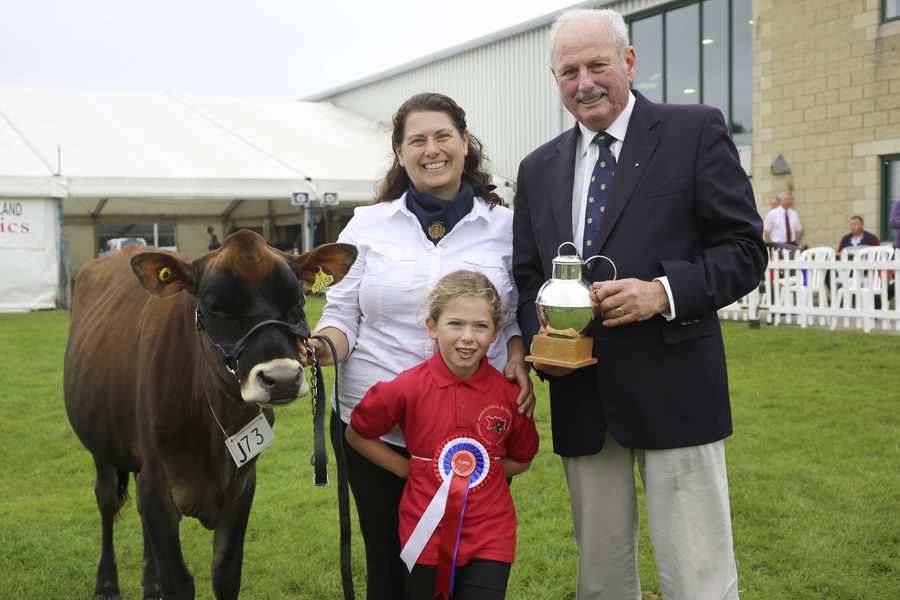
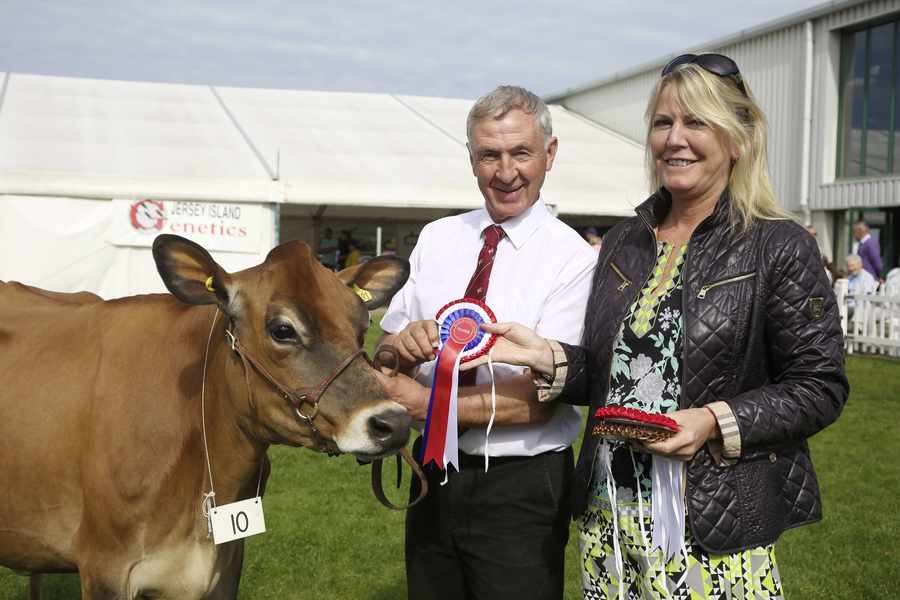
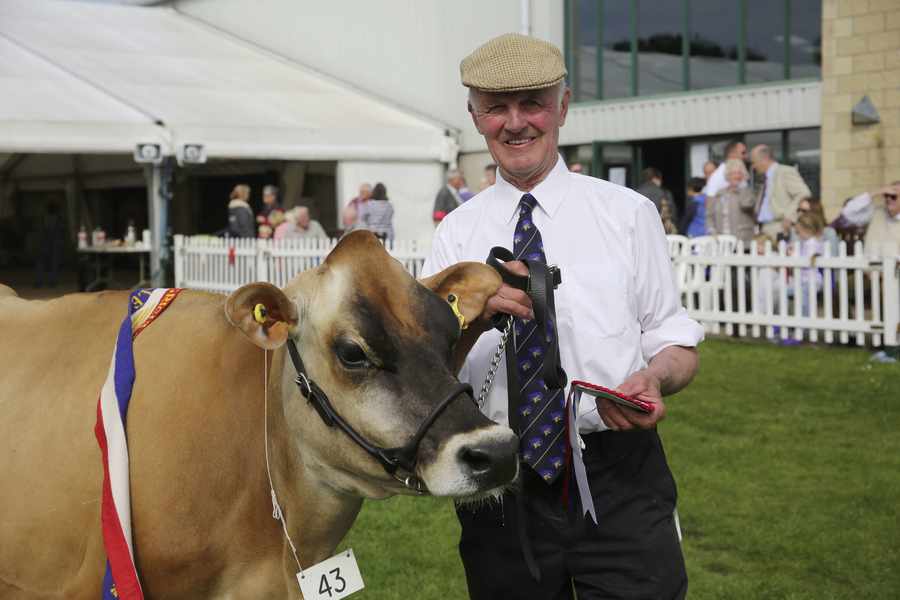
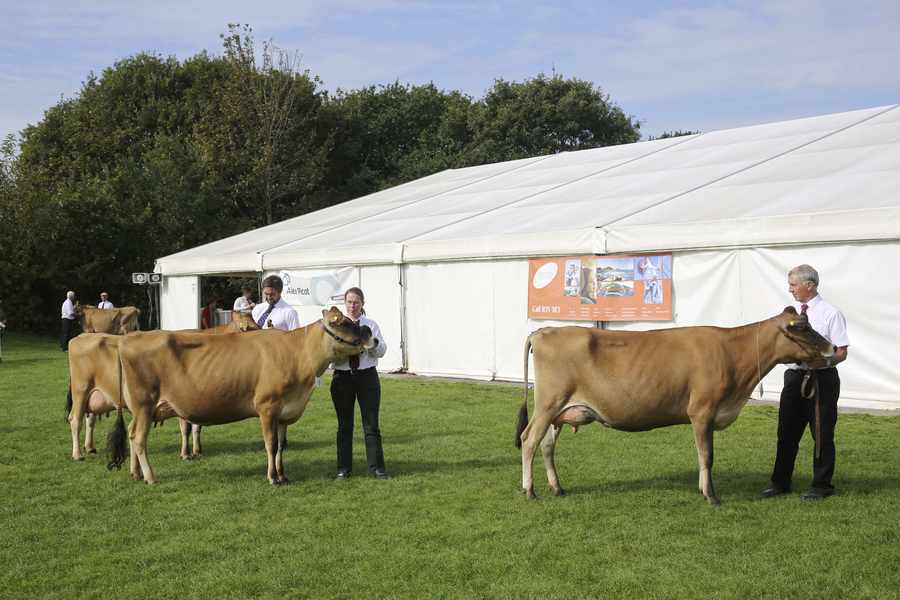
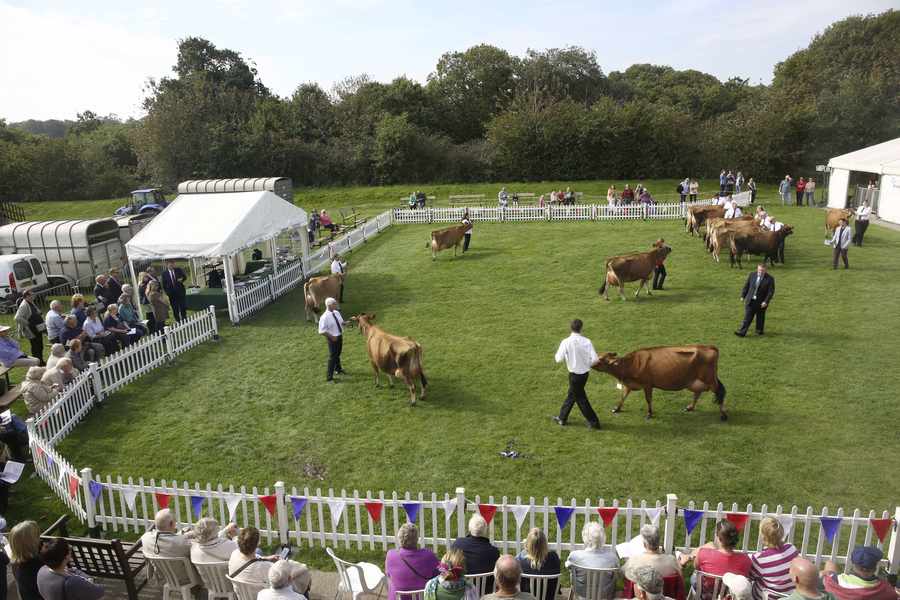
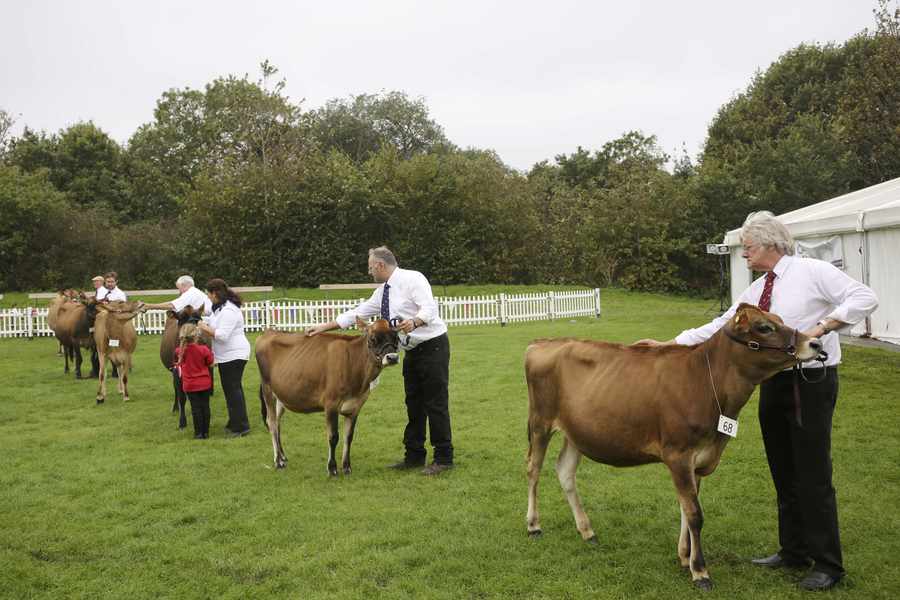
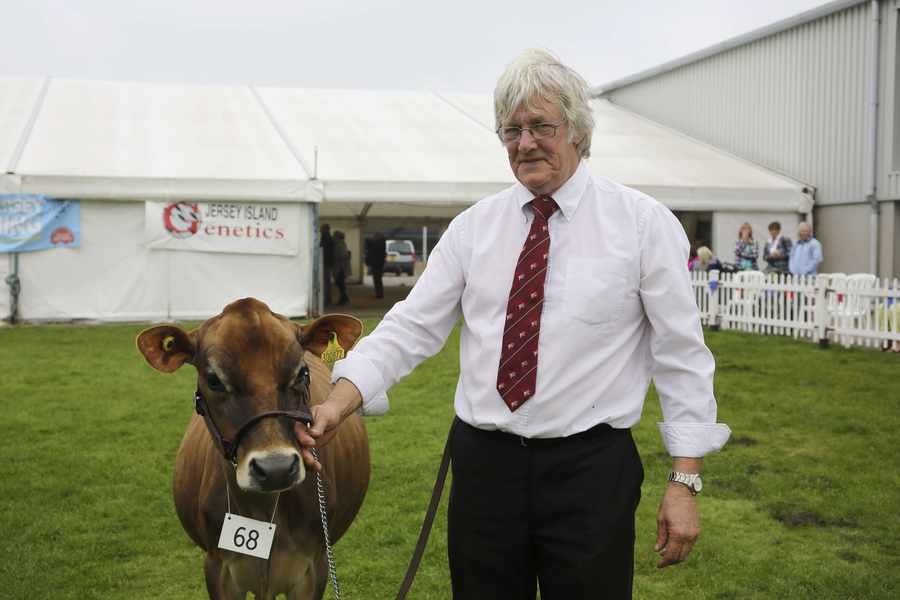
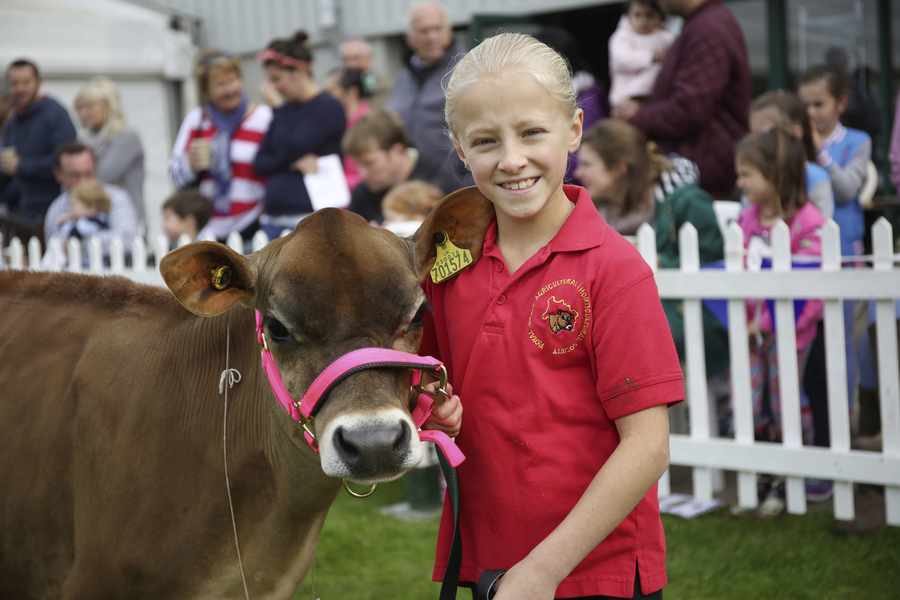
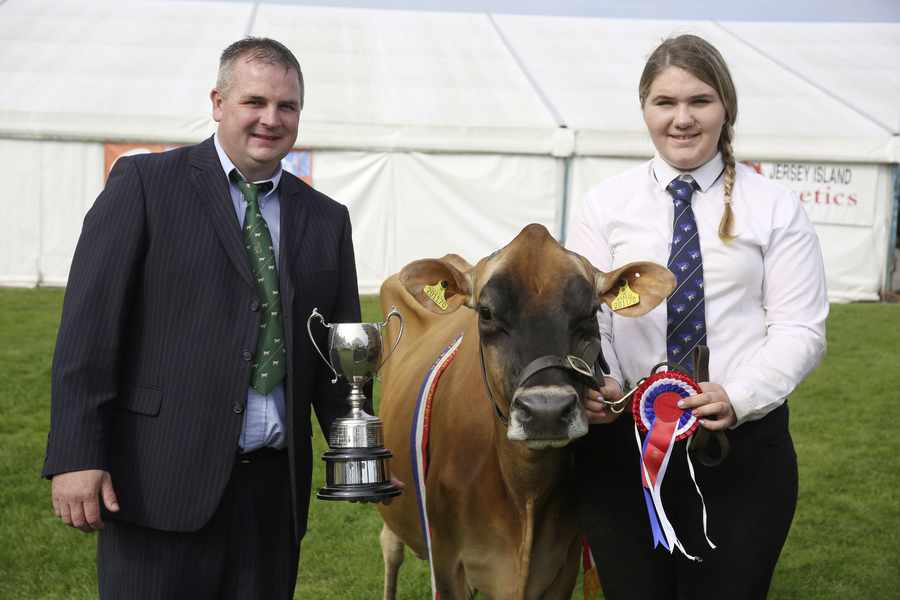
Le Feuvre Farms: Charlie and sons Preston and Powell
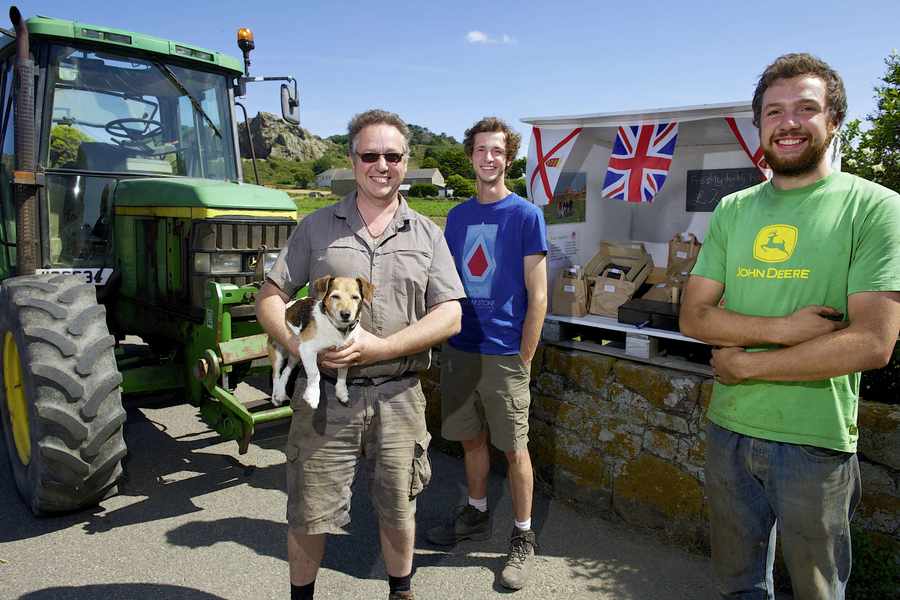
Where do you farm, and how long has your family been farming?
Our farm is in St Mary but most of our fields are in St Ouen, at L’Etacq, an area renowned for some of the best soils for growing Jersey Royals in the Island. Our family have been farming this same land for five generations.
What’s it like working together as a family?
There is a real sense of freedom. We constantly encourage each other to work hard and we enjoy bouncing fresh ideas off one another. We are all passionate about the business and love what we do.
Where can your produce be bought?
It is sold in Jersey, from honesty boxes and in local shops. People buying locally is what keeps us in business.
How important are provenance and freshness to your business?
They have been at the core of our business since the beginning and we think it should be equally important to our customers. Children are used to seeing their parents buying pre-packed food from supermarkets with no thought or understanding of where it comes from. The food we produce is seen growing in our fields, bought the day it is picked from an honesty box on that same field, so customers know they are getting the freshest produce at a fair price.
Should the States give more support to local producers, and it so, why?
Farming is vital to keep local farms afloat because they are keeping money in the Island, preserving the land and benefiting other local businesses.Without the farms and fields, Jersey will lose the idyllic charm for which it is known and loved. And this could even have a knock on effect for tourism.
Becky Houzé returned to Jersey from studying agriculture in the UK and America in June to work alongside her father, Paul, on the family dairy farm in St Saviour

JERSEY is blessed with some of the deepest, most fertile soils in the world, all thanks to a combination of good fortune and careful farming practices by generations of Island farmers.
Our climate is about as good as it gets as far as growing most crops are concerned, and to top it all, Jersey, unlike Guernsey, slopes south to take advantage of the early spring and late autumn sun.
Agriculture is the Island’s oldest industry, and over the centuries it has changed and been adapted from sheep farming and growing apples to flowers and potatoes, with the ever-present native breed of cow, the Jersey – our pride and joy.
Jersey agriculture continues to change year by year, and even though there are fewer farm holdings, those left in the business are positively contributing to our economy and stewarding the order and richness of our countryside.
Sure, press coverage sometimes gives the impression of farming in crisis, and yes, global food commodities are currently at rock bottom, but here in Jersey we are creating niche markets and holding our head above water.
The global food market will rise in the coming decades with predicted population growth and, hopefully, the eradication of third-world starvation.
It is often said: ‘Look after the land – they aren’t making any more of it’, yet even I, at the age of 22, have seen too much of the Island being gobbled up for development, whether for housing, further garden extensions or other projects. In some parts of Island much of the land has been lost to equine use.
Nobody begrudges the use of some land for the horse, but all too often you can see just one or two horses occupying many more vergées than necessary, often with badly sited ‘temporary’ stables or shelters.
Obviously, land availability is still crucial to the success of farming, whether it is for export potatoes and flowers, home-grown vegetables or livestock fodder. Perhaps now is the time for the politicians, planners, as well as the rest of us to step back and reconsider the pace at which agricultural land is being diverted to other uses, much of it on a permanent basis.
Jersey’s rich and fertile soil must not be taken for granted – it is one of our greatest assets and needs to be protected for future generations. The days of plentiful cheap food might not last!
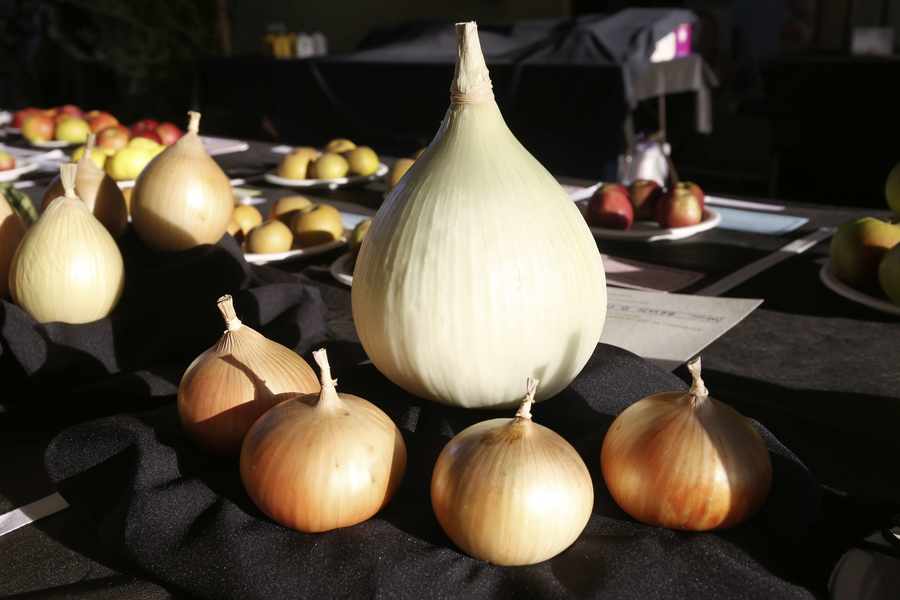
Special year for the Jersey Herd Book
NEXT year sees another milestone in the Island’s agricultural industry when Jersey cattle breeders from around the world attend the 150th anniversary
celebrations of the Jersey Herd Book.
The exhaustive tome, which details the history of cattle rearing in Jersey since 1866, is the guarantor of the breed’s purity.
It was the first register of pedigree Jersey cattle in the world and records every Jersey ever born in the Island.
The lineage of all Jerseys the world over can also be traced back to the Jersey Herd Book.
The first cow registered in the book was Daisy and belonged to Mr P Paisnel of St Clement, and the first bull, owned by James Godfray of St Martin, was Dandy.
Delegates attending the 2016 World Jersey Cattle Bureau annual meetings, regional congress and study tour taking place in Ireland and the UK have been invited to the Island between 18 and 22 June.
The bureau is an international organisation made up of national Jersey cattle associations, individuals and other organisations. The president is Derrick Frigot.
As well as joining in the anniversary celebrations, the tour itinerary includes the RJAHS Summer Country Show and visits to Island dairy farms
Golden glory
THE fields of sunflowers around the Island haven’t just been planted to lift our spirits as grey autumn skies herald shorter days and longer nights.
They are crucial for birds and wildlife – and next year’s Jersey Royals.
Farmers are working with Durrell, the National Trust for Jersey and the Environment Department in the Birds on the Edge project, to create 12 bird feeding sites, comprising 58 fields covering 185 vergées.
The fields are planted with a seed mix at the end of the potato season, timed to bloom and drop seeds when migratory birds stop over to feed in the autumn.
It is also beneficial for local birds by providing a source of food over the winter.
As well as sunflower, the special seed mix includes barley, mustard, millet and the super-food quinoa, which, when combined, are particularly beneficial for the skylark, stonechat, yellowhammer, linnet and reed bunting.






